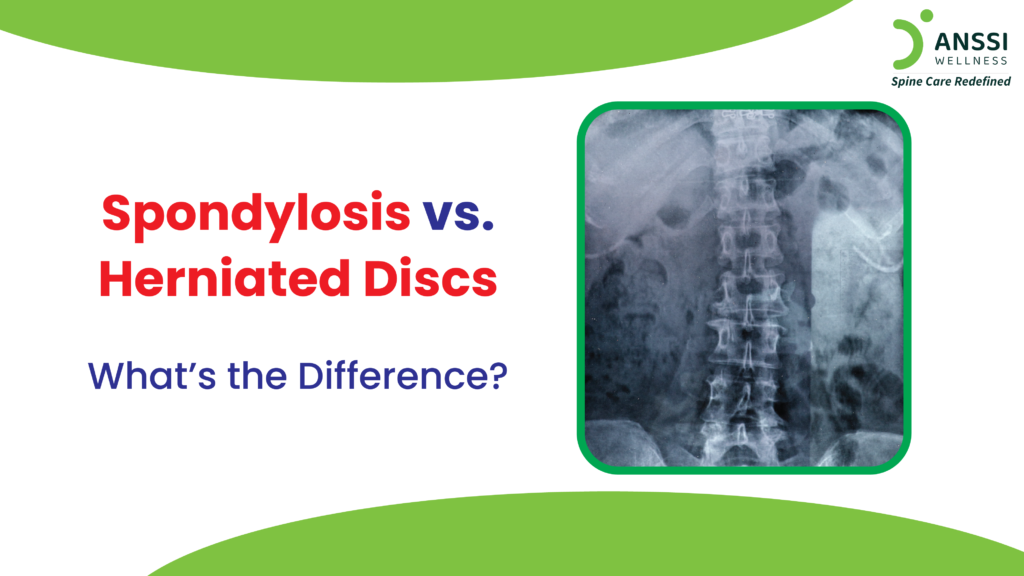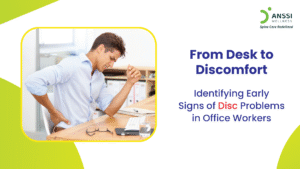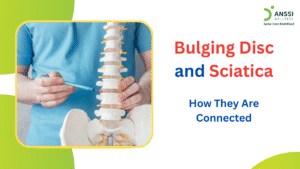Chronic back and neck pain are common complaints affecting millions of people worldwide. Two of the most frequent causes are spondylosis and herniated discs. Though both conditions affect the spine, they are fundamentally different in their causes, symptoms, and treatments.
Understanding these differences is key to finding the right treatment that can effectively relieve pain and improve spinal health.
What is Spondylosis?
Spondylosis is a degenerative condition of the spine caused by age-related wear and tear on the vertebrae, discs, and joints. It is commonly referred to as spinal arthritis and can develop in the cervical (neck), thoracic (mid-back), or lumbar (lower back) regions.
Causes of spondylosis:
- The natural ageing process leading to disc dehydration and bone spur formation
- Repetitive stress on the spine due to poor posture or occupation-related strain
- A sedentary lifestyle leading to weak spinal muscles
- Genetic predisposition to early degeneration
Symptoms of spondylosis:
- Stiffness and pain in the affected spinal region
- Reduced flexibility and range of motion
- Numbness or tingling if nerve compression occurs
- In severe cases, loss of coordination and balance
What is a Herniated Disc?
A herniated disc, also known as a slipped disc or ruptured disc, occurs when the soft inner gel-like material of an intervertebral disc pushes through a tear in the outer layer. This condition can compress nearby nerves, causing significant pain and discomfort.
Causes of a herniated disc:
- Sudden trauma or injury, such as lifting heavy objects incorrectly
- Prolonged poor posture that places stress on the spine
- Degenerative disc disease weakening the disc’s structure over time
- Repetitive bending, twisting, or high-impact activities
Symptoms of a herniated disc:
- Sharp, shooting pain radiating to the arms (if in the neck) or legs (if in the lower back)
- Muscle weakness and difficulty in movement
- Numbness or tingling along the impacted nerve pathway
- Increased pain while sitting, bending, or lifting
How Spondylosis and Herniated Discs Interact
Although spondylosis and herniated discs are separate conditions, they often coexist.
Over time, the degeneration from spondylosis can weaken the discs, making them more susceptible to herniation. Bone spurs from spondylosis may also contribute to nerve compression, worsening symptoms similar to a herniated disc.
Spinal Decompression Treatment: A Non-Surgical Solution
Traditional treatments for these conditions include pain medications, physical therapy, and in severe cases, surgery. However, spinal decompression treatment offers an effective, non-invasive solution for both spondylosis and herniated discs.
How Does Spinal Decompression Work?
Spinal decompression treatment gently stretches the spine using a specialised decompression table, creating negative pressure within the discs.
This helps to:
- Reduce pressure on compressed nerves
- Rehydrate and heal damaged discs
- Improve blood flow and nutrient absorption
- Relieve chronic pain without surgery or medication
- Why Choose Spinal Decompression Over Surgery?
Unlike surgery, which carries risks like infection and long recovery times, spinal decompression is safe, painless, and requires no downtime. It addresses the root cause of pain by restoring spinal alignment and disc function, allowing patients to return to an active lifestyle.
If you’re struggling with chronic back or neck pain, consulting a specialist about spinal decompression treatment could be the first step toward lasting relief.
About ANSSI:
ANSSI Wellness focuses on improving the quality of life for patients suffering from spinal issues, aiming to provide relief where other conventional treatments have failed. Through advanced non-surgical spinal decompression treatment, ANSSI is committed to helping patients avoid surgery and recover in a safe, effective, and compassionate environment.
Connect with ANSSI Wellness on LinkedIn, Instagram, and Facebook for expert guidance.



